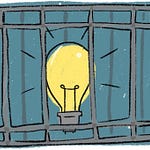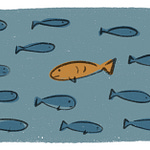Removing roadblocks where it matters is key to profitability

Subscribe to the Smith Sense Podcast: — iTunes. — Stitcher. — Spotify. — Overcast. — Download.
In a previous episode we discussed market friction, which I described as the heart of all entrepreneurial opportunity. This week we’ll discuss operational friction, which is central to profitability.
Theory of constraints
In the classic personal development book The Goal, Israeli management consultant Eliyahu Goldrapp outlines a “theory of constraints,” which essentially says that to achieve any business goal — such as profitability — you must first identify and resolve the operational friction in your organization.
Friction can mean anything that slows your company down, impedes growth, or stymies innovation. Often, it’s seemingly small things that go overlooked until you start digging.
Friction is hindrance to the execution of strategy
A century a half before Goldrapp, the Prussian general and military theorist Carl von Clausewitz described a similar type of friction in his posthumously published book On War. He defined friction as the hindrance to the execution of strategy.
If your objective is to overtake an enemy, he wrote, the friction might be getting armaments to the frontlines: managing supply transport, keeping the horses fed, etc.
Work on the business, not in the business
How do you identify the operational friction in your business?
First, you need to free up time to think about the big picture — and the minutia. In the classic book E-Myth Revisited, author Michael Gerber wrote that the goal for leaders is to work on the business, not in the business.
Have a vision
You have to have a vision of how something might be done. Have a dream scenario that you’re trying to achieve.
Look for the chokepoints
Then scrutinize all of the things that may be causing friction along the way. Ask, “Why aren’t we able to do this today? What’s holding us back”
Look everywhere for the bottlenecks — the things holding your organization back from achieving your main objectives.
Essentially, you’re asking, “What’s wrong with the way we’re doing things today?”
Understand your objectives
The key is understanding your objectives. For example, are you trying to increase the throughput of a specific system within the business or lower the costs of a certain process? Defining your objective helps you hone in on the chokepoints.
The ‘little’ things aren’t always
When you do this, you end up paying attention to seemingly little things that are easily overlooked. It could be a policy that requires someone to take an extra step, which adds that much more time or cost to a process, and ultimately hinders your ability to hit your company’s objectives.
Often, it’s something put in place by accident.
Formula 1 now vs. 1950
There’s a great YouTube video, “Formula 1 Pit Stops,” comparing a pit stop from 1950 to one today. A process that once took 67 seconds now takes less than 2.
Pit crews removed friction across the entire chain: They adjusted policies, such as quadrupling the number of people on a pit crew; they invented new tools; and they started training like professional athletes. The result: faster pit changes than anyone thought possible in 1950.
Elon Musk’s ‘production hell’
Elon Musk was in what he called “production hell” recently. Tesla built an assembly line to automate the entire process, in order to reduce their operational friction and cost of production. But it didn’t work, and humans had to take everything back over.
During this time, Musk slept on the factory floor working out small engineering problems to improve the efficiency of the line. In order to understand those issues, Musk felt he had to be there 24/7.
Get into the details
When you roll up your sleeves like Musk to investigate, it’s among that morass of small things that you find the one thing that matters and has an oversized effect on everything else. A lot of times it’s decisions that you made before that people take for granted.
Measure the right things
To do this well, it’s crucial that you track the right metrics. If a 1950 pit crew measured its performance solely by what their competitors were doing, they’d be setting their sights too low, compared to what’s possible.
Knowing where things are today doesn’t help you understand what’s possible in the future.
Low-hanging fruit
When you see a lot of capital — whether time or money — spent in one area of your company, that’s often low-hanging fruit for improvement.
Don’t over-correct
Organizations can create their own friction by overanalyzing what went wrong and trying building elaborate mechanisms to ensure it doesn’t happen again. So you have to put things into perspective.
The biggest thing
The biggest thing is asking questions about why something can’t be so much better than it is — and not incremental better, but transformationally better.
It’s an automated assembly line.
It’s instantaneous auction listings on Royalty Exchange.
It’s a pit stop in less than 2 seconds.
These are the types of things that reduce friction within an organization and lead to sustainable profits.
Resources
E-Myth Revisited, by Michael Gerber
The Goal, by Eliyahu Goldrapp














Share this post